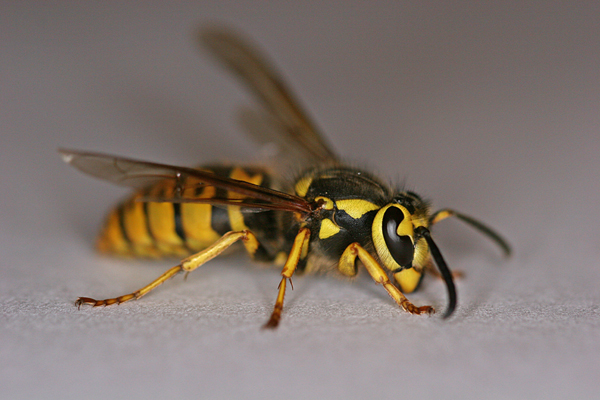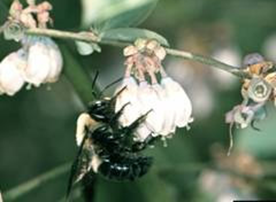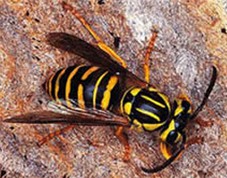Habitat
Wild nests are found in hollow trees and manmade structures. Colonies managed by beekeepers are typically kept in wooden hives and may be found in urban, suburban and rural settings. Workers visit flowers in meadows, open woods, agricultural areas, yards and gardens.
Lifecycle
Honey bees are highly social, usually consisting of a single queen, between 6,000 and 60,000 workers, and a few hundred to a few thousand drones. Colonies are perennial, usually surviving for several years. At the beginning of the spring, the population of the colony is low. However, as the queen lays eggs, and the workers forage for pollen and nectar to feed the developing brood, it grows through the summer.
Colonies reproduce by swarming, which typically occurs in May or June, but occasionally in September or October. A swarm consists of the original queen and several thousand workers. A swarm will cluster on a branch near the original nest while scouts seek a new, permanent location. This may take a few hours or a few days. Rarely, a swarm will build a new nest where it first alights. Honey bees prefer to nest in hollow cavities of trees, but manmade structures are commonly selected as well. All individuals within a colony, except the drones, survive the winter on stored honey.
Damage
Honey bees nesting in the wall of a house or building present two problems. First they pose a stinging hazard. Second, they can cause structural or aesthetic damage. If the colony is killed or dies, honey may ferment and create a nuisance odor. The wax comb may sag or melt, and honey may flow from the combs and damage drywall and plaster.
Benefits
Honey bees provide pollination for over 90 commercially grown crops as well as many wild plants. It is estimated that honey bee pollination adds $14.6 billion per year to agricultural output in the US. They also provide over 200 million pounds of honey, as well as a variety of other products such as beeswax, pollen and propolis.
Sting
Honey bees can be defensive around their nest, and they often defend in large numbers. If this happens, it is best to cover your face with your hands and carefully move in a straight line away from the nest. Unlike other stinging insects, honey bees have a barbed stinger that remains in its victim after stinging. If stung, remove the stinger as soon as possible by scraping it out with a fingernail or credit card. If you are stung, cooling the area with ice may be soothing.
Remember!
Insect stings can elicit a life-threatening, allergic reaction in some individuals. Check with your physician to determine what symptoms require a visit to the emergency room. Never attempt any control measure if you have a known allergy to insect stings.
Further sources: Seeley, T.D. 1996. The Wisdom of the Hive: The Social Physiology of Honey Bee Colonies. Belknap Press, 309 pages.
Winston, M.L. 1991. The Biology of the Honey Bee. Harvard University Press.
Prepared by: Kathryn Gardner, Carolyn Klass, and Nicholas Calderone
Date Prepared: July 2004






